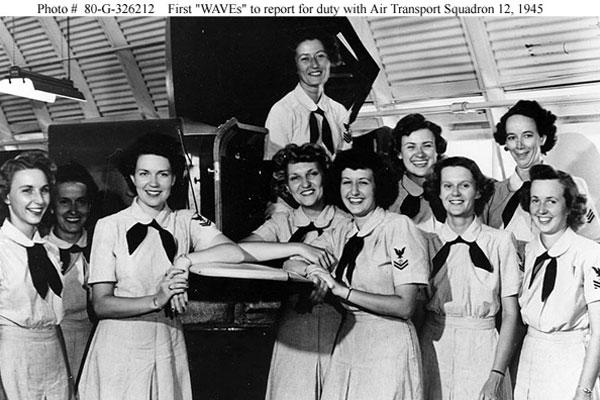NEWPORT, R.I. -- Some of the earliest women in America's Navy have a new place where their stories are being told, at the U.S. Naval War College (NWC) in Newport, Rhode Island, through a project just completed by college archivists.
An oral history project more than 20 years in the making, the Naval Historical Collection at NWC collected and preserved the firsthand accounts of female Sailors and Marines in the Women Accepted for Volunteer Emergency Service (WAVES).
Their stories are now available online for the first time.
Before the WAVES program was established in 1942, women had very limited roles and served mostly as nurses or clerks. It wasn't until 1948, when the U.S. enacted the Women's Armed Services Integration Act that women were able to serve as permanent, regular members of the armed forces.
The experiences of many of these ground-breaking Sailors have never been told completely.
"There was some documentation for WAVES officers," said Scott Reilly, NWC archivist who helped complete the digitization of the women's stories. "But there was really little that had ever been done to collect the experiences of the rank and file of the WAVES until this project."
More than 80 interviews with WAVES, SPARS (the Coast Guard equivalent) and others were recorded.
According to Reilly, he hasn't heard of any other WAVES collection this comprehensive - both in quantity and context. These stories are about more than just their military experiences.
"They don't talk just about their Navy service," said Reilly. "They talk about their lives in general, and they offer insights into women's lives in the '30s and '40s. They talk about their lives before and after the service, where they came from and their education. They give you a sense of this particular era.
"We're making sure that their experiences are being captured for the benefit of future generations."
These oral histories are valuable in that they not only tell our history, but also highlight the many contributions of women to our Navy.
"You always have the official record, but that doesn't always tell you what actually went on," said Reilly. "The official written records only tell you so much, but personal papers can tell you more. And oral histories can sometimes tell you even more than that."
That's why projects such as this are important. They capture the experiences of important groups of people who were pioneers in a lot of ways.
"Without the oral history project, we probably wouldn't have their stories," said Reilly. "Many of those memories and those experiences of that generation are being lost every day."
More than 86,000 women served in the WAVES.




























